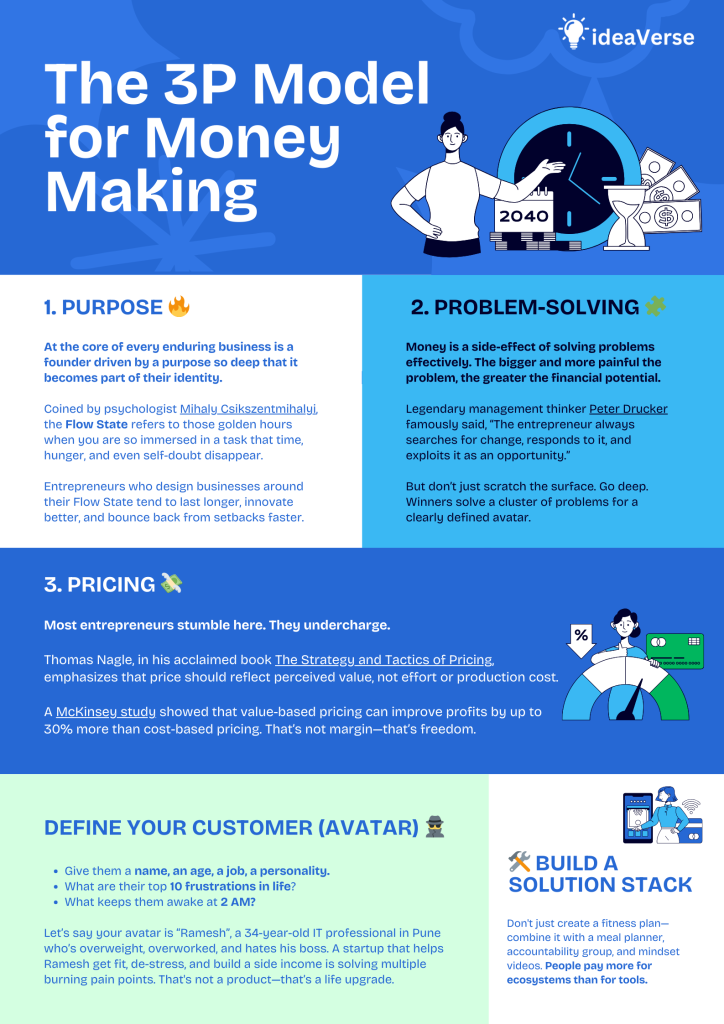- Money Making isn’t just about building something that sells—it’s about building something that sustains, inspires, and ultimately transforms lives (yours and others’).
- The 3P model—Purpose, Problems, and Pricing—is a strategic, psychological, and philosophical framework for not only making money but doing so ethically, meaningfully, and with momentum.

Table of Contents
The Power of Purpose: Your Flow State
At the core of every enduring business is a founder driven by a purpose so deep that it becomes part of their identity. This isn’t woo-woo; it’s neuroscience, psychology, and history in action.
Coined by psychologist Mihaly Csikszentmihalyi, the “Flow State” refers to those golden hours when you are so immersed in a task that time, hunger, and even self-doubt disappear. Entrepreneurs who design businesses around their Flow State tend to last longer, innovate better, and bounce back from setbacks faster. Research from Harvard Business Review shows that purpose-driven individuals are 5X more likely to report satisfaction and resilience in the face of business failures.
- Steve Jobs was obsessed with aesthetics and user experience. This obsession—his Flow—didn’t just build Apple, it rebuilt it after near collapse.
- Elon Musk, despite criticism and controversy, has a deep purpose around space, sustainability, and superintelligence. His ventures—from Tesla to SpaceX—align with these driving forces.
Purpose to Problem-Solving: Solutions Are the Currency
Money is a side-effect of solving problems effectively. The bigger and more painful the problem, the greater the financial potential. Legendary management thinker Peter Drucker famously said, “The entrepreneur always searches for change, responds to it, and exploits it as an opportunity.”
But don’t just scratch the surface. Go deep. Most failed businesses offer partial or superficial solutions. Winners solve a cluster of problems for a clearly defined avatar.
Define Your Dream Customer (Avatar)
- Give them a name, an age, a job, a personality.
- What are their top 10 frustrations in life?
- What keeps them awake at 2 AM?
Let’s say your avatar is “Ramesh”, a 34-year-old IT professional in Pune who’s overweight, overworked, and hates his boss. A startup that helps Ramesh get fit, de-stress, and build a side income is solving multiple burning pain points. That’s not a product—that’s a life upgrade.
Build a Solution Stack
Don’t just create a fitness plan—combine it with a meal planner, accountability group, and mindset videos. People pay more for ecosystems than for tools.
Pricing for Profits: The Art of Value Exchange
Now that you’ve solved something meaningful, let’s talk about money. Most entrepreneurs stumble here. They undercharge. Why? Impostor syndrome, fear of rejection, and a scarcity mindset. Thomas Nagle, in his acclaimed book The Strategy and Tactics of Pricing, emphasizes that price should reflect perceived value, not effort or production cost. A McKinsey study showed that value-based pricing can improve profits by up to 30% more than cost-based pricing. That’s not margin—that’s freedom.
- If your online course helps someone land a ₹10L job, should it cost ₹999? Or ₹49,999? 🤔
- A therapy app that saves a marriage has a life-changing ROI—price it like that.
Use Anchoring: Frame the Price Around the Cost of Inaction
- “Not buying this fitness program might cost you ₹5L in future medical bills.”
- “Not building your personal brand might cost you 10 years of career growth.”
Common Pitfalls That Kill Businesses Early
As they say in business: “You don’t get what you deserve—you get what you negotiate.”Avoid these traps at all costs:
- Chasing Money Without Purpose: This leads to burnout, inconsistency, and shallow brands.
- Underselling Your Value: Low price = low trust. If your product is powerful, price boldly.
- Jumping Between Models: Choose one lane. Refine it. Master it. Don’t be a jack of all platforms and king of none.
Key Citations
Action Items
- Find Your Flow: Spend 7 days noting down when you lose track of time. Is it designing? Talking to customers? Writing code? Making music? That’s your Flow. Build your business around this zone.
- Set Value-Based Prices: Quantify the transformation your product offers. Create a Transformation Equation: Monetary Value = (Time Saved + Money Gained + Health/Peace Gained). E.g. Coaching that helps someone get promoted = ₹10L/year hike = Price it at ₹50K–₹1L
- Commit to Consistency: Resist the urge to chase trends. Pick one platform/model—YouTube, Blog, Newsletter. Give it 12 months without pivoting.





